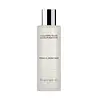What's inside
What's inside
 Key Ingredients
Key Ingredients

 Benefits
Benefits

 Concerns
Concerns

 Ingredients Side-by-side
Ingredients Side-by-side

Water
Skin ConditioningAloe Barbadensis Leaf
MaskingPolysorbate 20
EmulsifyingDisodium Cocoamphodipropionate
CleansingGlycerin
HumectantCitric Acid
BufferingChamomilla Recutita Flower Extract
MaskingSymphytum Officinale Leaf Extract
Skin ConditioningCucumis Sativus Fruit Extract
EmollientEuphrasia Officinalis Extract
AntimicrobialRosa Canina Fruit Extract
AstringentHamamelis Virginiana Leaf Extract
Skin ConditioningPhenoxyethanol
PreservativeMethylparaben
PreservativePotassium Sorbate
PreservativeSodium Benzoate
MaskingWater, Aloe Barbadensis Leaf, Polysorbate 20, Disodium Cocoamphodipropionate, Glycerin, Citric Acid, Chamomilla Recutita Flower Extract, Symphytum Officinale Leaf Extract, Cucumis Sativus Fruit Extract, Euphrasia Officinalis Extract, Rosa Canina Fruit Extract, Hamamelis Virginiana Leaf Extract, Phenoxyethanol, Methylparaben, Potassium Sorbate, Sodium Benzoate
Water
Skin ConditioningPEG-12
HumectantDisodium Cocoamphodiacetate
CleansingGlycerin
HumectantPolysorbate 20
EmulsifyingAloe Barbadensis Leaf Juice
Skin ConditioningCucumis Sativus Fruit Extract
EmollientChamomilla Recutita Flower Extract
MaskingSodium Hyaluronate
HumectantBisabolol
MaskingLactic Acid
BufferingGlucose
HumectantEthoxydiglycol
HumectantPentylene Glycol
Skin ConditioningButylene Glycol
HumectantPropylene Glycol
Humectant4-T-Butylcyclohexanol
MaskingDisodium EDTA
Methylparaben
PreservativePhenoxyethanol
PreservativeWater, PEG-12, Disodium Cocoamphodiacetate, Glycerin, Polysorbate 20, Aloe Barbadensis Leaf Juice, Cucumis Sativus Fruit Extract, Chamomilla Recutita Flower Extract, Sodium Hyaluronate, Bisabolol, Lactic Acid, Glucose, Ethoxydiglycol, Pentylene Glycol, Butylene Glycol, Propylene Glycol, 4-T-Butylcyclohexanol, Disodium EDTA, Methylparaben, Phenoxyethanol
Ingredients Explained
These ingredients are found in both products.
Ingredients higher up in an ingredient list are typically present in a larger amount.
Chamomilla Recutita Flower Extract comes from the Chamomile flower.
Chamomile is rich in antioxidants and has anti-inflammatory properties. Several compounds found in chamomile help with soothing, such as bisbolol.
Antioxidant components in chamomile make it an effective ingredient to help slow the signs of aging. Antioxidants help fight free-radical molecules, or molecules that may damage your skin.
Essential oils from chamomile have been found to improve wound healing due to its antimicrobial properties.
Ancient Greeks and Egyptians used Chamomile to treat skin redness and dryness. Chamomile has also been used to help treat stomach issues.
Learn more about Chamomilla Recutita Flower ExtractThis extract comes from cucumber. Cucumbers are mostly made up of water (95%), and the other 5% is composed of: vitamin C, caffeic acid, fatty acids, amino acids, and other minerals.
Cucumbers have anti-inflammatory, barrier repair, and hydrating properties.
They contain shikimate dehydrigenase, an enzyme shown to help reduce inflammation and soothe the skin.
The amino acids found in cucumbers help nourish our skin's natural acid mantle (it's an important part of our skin barrier). This slightly acidic film acts as a barrier to protect us from bacteria, viruses, and other contaminants.
Unless you have an allergy to cucumbers, this is generally a non-irritating ingredient.
Fun fact: Cucumis Sativus is native to South Asia and can now be found on every continent.
Learn more about Cucumis Sativus Fruit ExtractGlycerin is already naturally found in your skin. It helps moisturize and protect your skin.
A study from 2016 found glycerin to be more effective as a humectant than AHAs and hyaluronic acid.
As a humectant, it helps the skin stay hydrated by pulling moisture to your skin. The low molecular weight of glycerin allows it to pull moisture into the deeper layers of your skin.
Hydrated skin improves your skin barrier; Your skin barrier helps protect against irritants and bacteria.
Glycerin has also been found to have antimicrobial and antiviral properties. Due to these properties, glycerin is often used in wound and burn treatments.
In cosmetics, glycerin is usually derived from plants such as soybean or palm. However, it can also be sourced from animals, such as tallow or animal fat.
This ingredient is organic, colorless, odorless, and non-toxic.
Glycerin is the name for this ingredient in American English. British English uses Glycerol/Glycerine.
Learn more about GlycerinMethylparaben is a preservative and is a paraben. It is used to prevent the growth of fungus, mold, and other harmful bacteria. Parabens are chemicals used as preservatives in both cosmetics and food.
Methylparaben can be synthetically created. It can also be found naturally in some fruits, such as blueberries.
Oftentimes, Methylparaben is combined with other parabens to help increase the shelf life.
The safety of Methylparaben is currently being studied. While ongoing studies are looking into the safety of parabens, the results have been very mixed. Some studies have not found Methylparaben to be harmful.
Learn more about MethylparabenPhenoxyethanol is a preservative that has germicide, antimicrobial, and aromatic properties. Studies show that phenoxyethanol can prevent microbial growth. By itself, it has a scent that is similar to that of a rose.
It's often used in formulations along with Caprylyl Glycol to preserve the shelf life of products.
Polysorbate 20 is made by combining ethoxylation of sorbitan, ethylene oxide, and lauric acid. It is a mild cleansing agent, surfactant, and emulsifier.
As a surfactant, it helps collect dirt and oils for washing. Emulsifiers prevent oils and water from separating.
Polysorbate 20 also adds scent to a product. Since it is made using sorbitol, it has a sweet scent. Sorbitol can also be found in fruits such as apples and peaches.
The lauric acid used to create Polysorbate 20 is often derived from coconuts.
Polysorbate 20 may not be fungal acne safe.
Learn more about Polysorbate 20Water. It's the most common cosmetic ingredient of all. You'll usually see it at the top of ingredient lists, meaning that it makes up the largest part of the product.
So why is it so popular? Water most often acts as a solvent - this means that it helps dissolve other ingredients into the formulation.
You'll also recognize water as that liquid we all need to stay alive. If you see this, drink a glass of water. Stay hydrated!
Learn more about Water